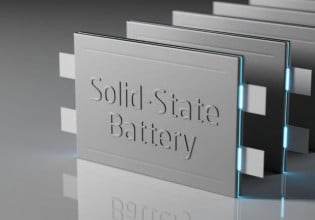Versa Power Fuel Cell Completes Successful Tests Of Propulsion System For Unmanned Undersea Vehicles
Versa Power Systems, Inc., a developer of Solid Oxide Fuel Cells (SOFC) that generate clean electricity in compact form for both mobile and stationary applications, announced that its SOFC technology was successfully integrated into an experimental test bed representative of a propulsion system for stealth surveillance vehicles under development by the U.S. Navy.
An SOFC stack – the basic clean-tech unit of a fuel cell that generates electricity through an electrochemical reaction – was evaluated under conditions that simulate the expected demands on an Unmanned Undersea Vehicle (UUV). The design goals of the UUV are for it to operate autonomously, undetected, and conduct surveillance over lengthy periods.
In tests by the Naval Undersea Warfare Center (NUWC) in Newport, Rhode Island, the SOFC stack from Versa Power was integrated with a compact fuel processor fabricated by InnovaTek, Inc.; the combined propulsion system would fit in the tight confines of a UUV and offer more available energy than rechargeable batteries. The in-flow of specially formulated fuel and the high system efficiency would allow a UUV that is 21 inches in diameter and approximately 20 feet long to run continuously for 30-60 hours depending on the power demand.
The Navy’s interest in fuel cells for underwater propulsion stems from their advantages over other power systems used in the past, such as diesel engines or batteries. According to Versa, like combustion engine systems, fuel cell systems can be quickly refueled between missions – but they lack any moving mechanical parts so they are inherently silent and have much higher efficiency. And in comparison to batteries, which produce far less electricity at the end of a charge than at the beginning, fuel cells keep producing a steady flow of electricity for as long as fuel (logistic fuels or biodiesel) is supplied.
"Long endurance is made possible by the SOFC’s high electrical efficiency and small package size," said Dr. Alan Burke, a chemical engineer and co-leader of the NUWC project. "Even with the need to store on-board fuel and an oxygen source, the fuel cell system has the potential to store considerable energy compared to other propulsion systems."
The test at NUWC simulated the fuel flow that an operational UUV would use to feed its solid oxide fuel cell, recycling unspent fuel back into the system to capture every bit of energy available. Under these conditions, the electrical efficiency of Versa Power’s fuel cell stack was 70% for the duration of the test run. Overall system efficiency in operation would be expected to be somewhat lower, the difference stemming from energy consumption that’s devoted to the propulsion device’s inner workings (known technically as parasitic power losses).
"Compared to traditional combustion engines, which generally achieve a maximum of 30% efficiency in operation, this system demonstrated a highly efficient means to utilize diesel-type fuels for power generation," Burke said.
UUV designers anticipate fuel cells will provide both low-speed silent propulsion – powering its electric motor – as well as the electricity needed to run the UUV’s guidance & control systems, sensors and transmitters.






